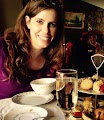About Me

So if you want to be happy at work like I am, then thanks for being a reader! I am a consultant that travels constantly and is always working with new people. I love what I do! I'm formally trained with an MBA and BS Engineering. At home and in my free time, I like to drink beer, travel, garden, read, hike with my dog, and play board games.
Recommended and Read
Popular Posts
-
Managing Transitions: Making the Most of Change By: William Bridges I liked this book for the most part. The main concept that...
-
Half the Sky: Turning Oppression into Opportunity for Women Worldwide by: Nicholas D. Kristof and Sheryl WuDunn What is the greatest u...
-
It takes a while to readjust after an amazing 2 week trip to China with 15 of my MBA classmates. Touring to Beijing, Shenyang, and Shanghai,...
-
Is the world really coming to an end? There seems to be many arguments with the US fiscal cliff, the Mayan 13th bak'tun year, and assort...
-
The long days of summer inspire me this week. I love being able to come home after work during the leisurely enjoy a drink, relax, and thin...




I always love potstickers, but haven't had them in China. Something to aim for. So--did you eat any Durian fruit? Probably the raw duck brain tasted better. ...Wait, how have you visited Mayan temples if you've never been out of the country before? ... Thanks for all the tips and tidbits. Interesting.
ReplyDeleteI saw Mayan temples on a cruise to Mexico, Guatemala, and Belize. I don't think a cruise really counts as traveling out of the country... do you? :-) Thanks for reading!
ReplyDeleteIf it were me, I'd count it if I set foot on the soil, walked in a town or city, and/or saw important local sites. So you cruised instead of driving to get there--that's a technical detail. ;-)
ReplyDelete